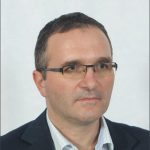
The research will continue to focus on the variable waveform generator. Also, the research as part of the doctoral thesis will be focused on the implementation of algorithms for measuring frequency, measuring rate of change of frequencyand, general power quality measurements, especially harmonics and flicker. The new goal is to create a device for testing phasor measurements units based on PC and Real time LV. Special emphasis is on the method of hardware clock generation driven by a satellite receiver. This year, co-organization of the international conference International Colloquium on Smart Grid Metrology is planned.
As part of the research in the field of energy efficiency, research will be done on the development of predictive models for the analysis and estimation of SOH/SOC parameters of battery systems. As part of the doctoral thesis, extensive cyclic measurements of the battery pack and controlled aging/degradation of SOH parameters will be carried out. By applying machine learning techniques, the prediction of the knee will be improved, i.e. the pre-phase of the end of the battery pack’s exploitation cycle will be detected. As part of other activities, regular annual engagement is expected.